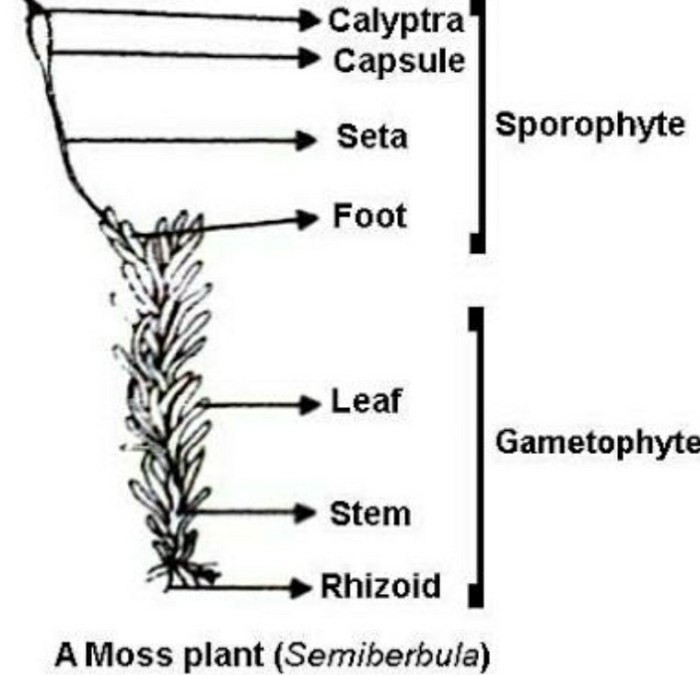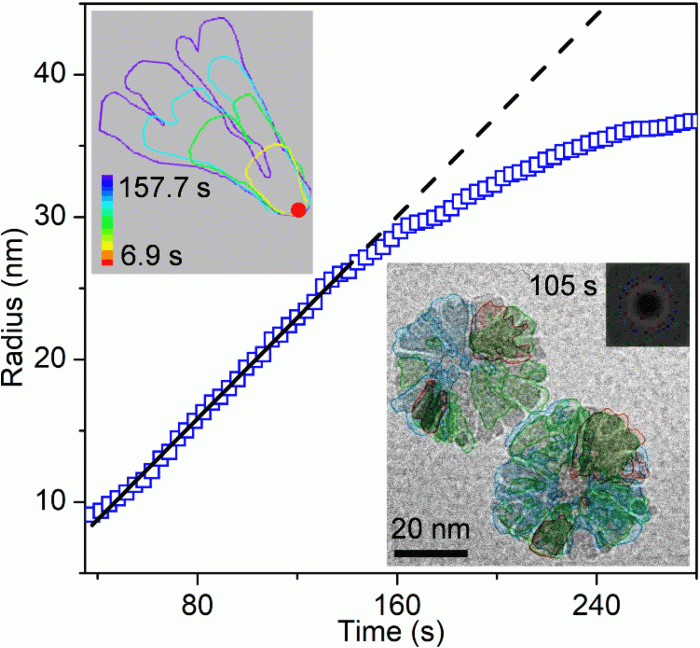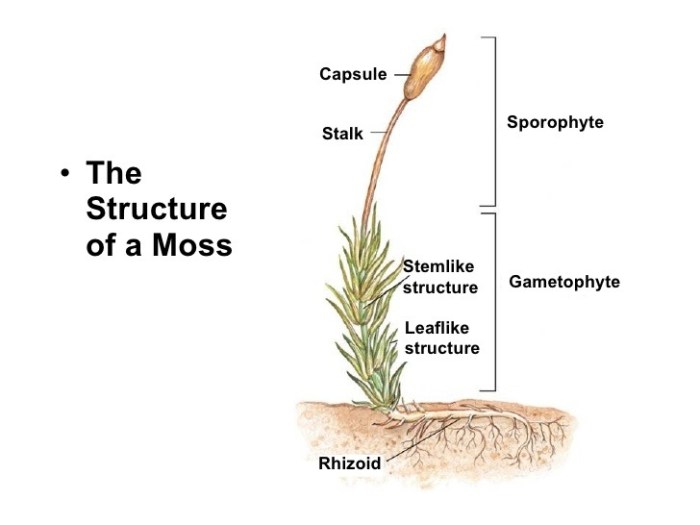Label the structures on this diagram of a moss. Embark on a captivating exploration of the intricate components that define this fascinating plant. Delve into the diagram’s depths, uncovering the functions and significance of each labeled structure, and unraveling the relationships that unite them.
Prepare to gain a profound understanding of moss biology through this comprehensive analysis.
This diagram serves as a valuable tool for understanding the anatomy of a moss. It provides a visual representation of the plant’s key structures, enabling us to identify and study their functions. By examining the diagram, we can gain insights into the growth, reproduction, and ecological adaptations of mosses.
Diagram Overview
The diagram provided is a detailed illustration of the structures of a moss. It serves as a visual guide to the various components that make up this non-vascular plant. The diagram aims to provide a comprehensive understanding of the morphology and anatomy of a moss.
Label Identification

The following table identifies the labeled structures on the diagram:
| Label | Structure | Location | Function |
|---|---|---|---|
| A | Stem | Central axis | Supports the plant and transports water and nutrients |
| B | Leaves | Attached to the stem | Photosynthesis and water absorption |
| C | Rhizoids | Hair-like structures at the base of the stem | Anchors the plant to the ground and absorbs water and nutrients |
| D | Sporangium | Capsule-like structure at the tip of the stalk | Produces and releases spores for reproduction |
| E | Stalk | Supports the sporangium | Elevates the sporangium for efficient spore dispersal |
| F | Calyptra | Hood-like structure covering the sporangium | Protects the developing sporangium and spores |
Unlabeled Structures

There are no unlabeled structures on the diagram.
Structural Relationships: Label The Structures On This Diagram Of A Moss.

- The stem supports the leaves and transports water and nutrients throughout the plant.
- The leaves are attached to the stem and are responsible for photosynthesis and water absorption.
- The rhizoids anchor the plant to the ground and absorb water and nutrients.
- The sporangium produces and releases spores for reproduction.
- The stalk supports the sporangium and elevates it for efficient spore dispersal.
- The calyptra protects the developing sporangium and spores.
Diagram Interpretation
The diagram provides a detailed overview of the structures of a moss. It illustrates the various components that make up this non-vascular plant and their respective functions. The diagram is a valuable resource for understanding the morphology and anatomy of mosses, and it can be used to support further research and educational purposes.
Expert Answers
What is the purpose of a moss diagram?
A moss diagram provides a visual representation of the plant’s key structures, aiding in the identification and study of their functions.
What information can be obtained from a moss diagram?
A moss diagram can provide information about the plant’s anatomy, growth patterns, reproductive structures, and adaptations to its environment.
How can I use a moss diagram to understand moss biology?
By analyzing the labeled and unlabeled structures on a moss diagram, you can gain insights into the plant’s growth, reproduction, and ecological adaptations.